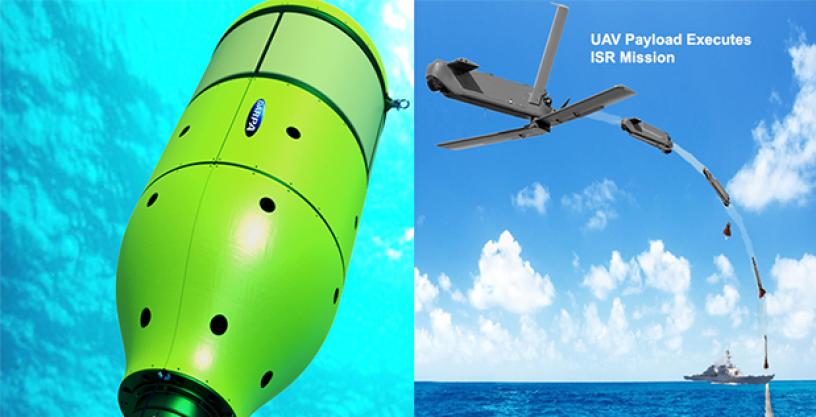
Program Summary
Today, cost and complexity limit the Navy to fewer weapons systems and platforms, causing strain on resources that must operate over vast maritime areas. Unmanned systems and sensors are commonly envisioned to fill coverage gaps and take action at a distance. However, power and logistics to deliver these systems over vast ocean areas limit their utility. The Upward Falling Payload (UFP) program intends to overcome these barriers.
The UFP concept centers on developing deployable, unmanned, nonlethal distributed systems that lie on the deep-ocean floor in special containers for years at a time. These deep-sea nodes could be remotely activated when needed and recalled to the surface. In other words, they “fall upward.” In today’s fiscally constrained environment, such a system of pre-positioned, deep-sea nodes could enable a full range of maritime mission sets that are more cost-effective than existing manned or long-range unmanned naval assets.
Nearly 50% of the world’s oceans are deeper than 4 km, which provides vast areas for concealment and storage. As a consequence, the cost to retrieve UFP nodes is asymmetric with the likely cost to produce and distribute them to the seafloor. Concealment provided by the sea also provides the opportunity to quickly engage remote assets that may have been dormant and undetected for long periods of time, while its vastness allows simultaneous operation across great distances. Getting close to objects without warning, and instantiating distributed systems without delay, are key attributes of UFP capability.
The UFP system is envisioned to consist of three key subsystems: The ‘payload’ which executes waterborne or airborne applications after being deployed to the surface; the UFP ‘riser’ which provides pressure tolerant encapsulation and launch of the payload; and the UFP communications, which triggers the UFP riser to launch.
To succeed, the UFP program must be able to demonstrate a system that can: (a) survive for years under extreme pressure, (b) be triggered reliably from standoff commands, and (c) rapidly rise through a water column and deploy its payload.
The program is in its second of three phases. During Phase 1, DARPA supported more than 10 study and design efforts to figure out approaches for long-range triggering communications, deep-ocean high-pressure containment, and payload launch. The study teams also addressed a variety of missions for the payloads.
In the current Phase, DARPA performers are building and sea testing both riser and communications components of the system. Three different payloads contained in these risers are under development: two unmanned aerial vehicles (UAVs) of different sizes and a novel lighter-than-air kite-and-tow-body payload. A flexible set of surveillance and communications capabilities, still under development, could be enabled by these payload platforms. For Phase 3, DARPA is planning at sea demonstrations of integrated riser and communications systems including the deployment of different payloads.
This program is now complete
This content is available for reference purposes. This page is no longer maintained.
